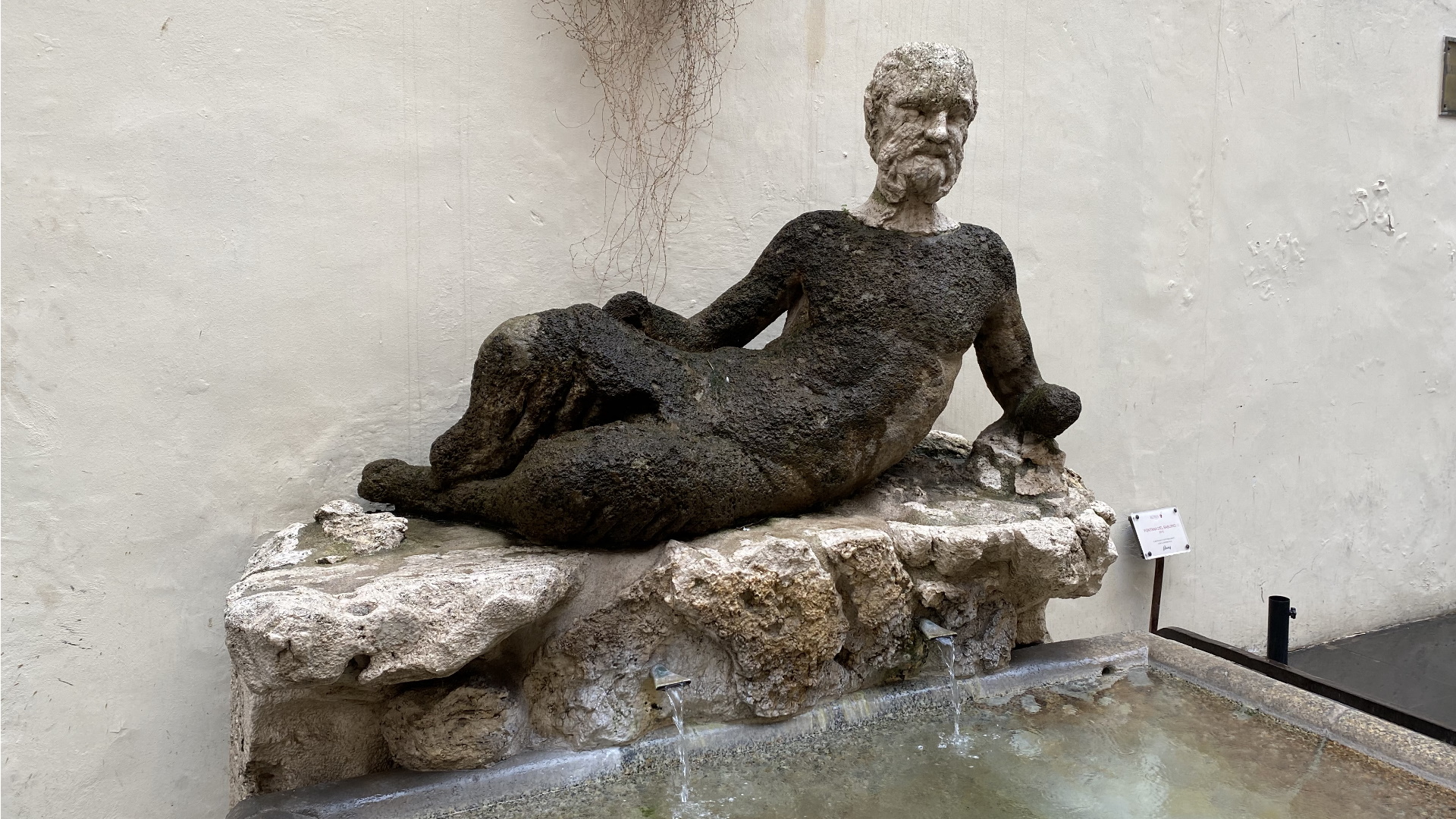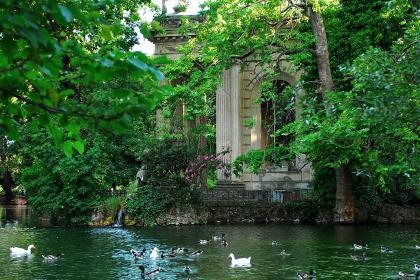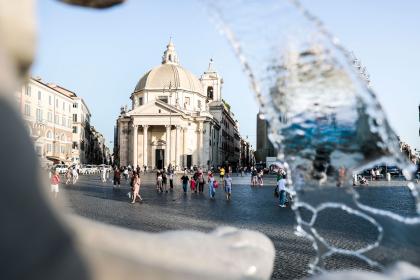
En la Roma papal, a partir del siglo XVI, la disidencia contra el poder establecido y las clases dominantes comenzó a manifestarse mediante la colocación nocturna de carteles con epigramas satíricos anónimos en ciertas estatuas romanas del centro histórico, para que los transeúntes pudieran leerlos a la mañana siguiente. Convertidas en portavoces originales de las quejas del pueblo romano, estas esculturas, de diferentes épocas, se ganaron el nombre de "estatuas hablantes" y constituyeron el "congreso de los ingenios". A menudo, las estatuas, que posteriormente recibieron nombres curiosos como Marforio, el Portero, el Abad Luigi, Madama Lucrezia, Pasquino y el Babuino, intercambiaban bromas mordaces por toda la ciudad.
Entre ellas, el Babuino es una estatua que representa a sileno reclinado, que, debido a su fealdad, recibió el apodo de "Babuino" por su parecido con un mono. La estatua de Sileno - antigua, pero con una cabeza distinta - también se ha identificado con el dios sabino Sancus Fidius Semi-Cabra.
El Babuino se hizo tan popular que la calle donde se encuentra incluso cambió de nombre. Inaugurada por el papa Clemente VII de Médici (1523-1534), se llamó via Clementina en su honor.
La estatua formaba parte de una fuente construida en 1576 y originalmente situada en la fachada principal del Palazzo Grandi.
La fuente consistía en una pila de época romana de granito gris, cuyo agua se vertía desde un sencillo caño, rodeada por una estatua de tamaño natural de toba tallada que representaba a Sileno reclinado sobre un acantilado.
Era una fuente semipública construida por el Papa a cambio de varias medidas de agua del Acueducto de Virgo, otorgadas al propietario del palacio, Alessandro Grandi.
En 1738, durante una importante restauración del palacio, la estatua se trasladó al lateral izquierdo del edificio, que desde entonces era propiedad de la familia Boncompagni-Ludovisi, y se colocó en un nicho almohadillado bordeado por dos pilastras y un arquitrabe decorado con dos delfines de travertino.
En 1877, la fuente fue desmantelada y el sileno se colocó en el patio interior del palacio, que había pasado a ser propiedad de la familia Cerasi. Sin embargo, la pila sustituyó a la del abrevadero de la Via Flaminia, frente a la fuente de Giulio III (1550-1555).
Finalmente, en 1957, tras las insistencias de los ciudadanos, la estatua de Babuino y la pila se unieron para ser utilizadas como fuente. Su nueva ubicación, cercana a su ubicación original, la sitúa ahora apoyada contra la pared del Museo taller Canova Tadolini, junto a la fachada de la iglesia de Sant'Atanasio dei Greci al Babuino.
Debido a su popularidad, la estatua parlante de Babuino llegó incluso a rivalizar con la más famosa estatua de Pasquino, hasta el punto de que sus diatribas también se conocían como "babuinate".
Piazza del Popolo

 Condividi
Condividi
Villa Borghese

 Condividi
Condividi
Basílica de Santa María en Montesanto (Iglesia de los Artistas)

 Condividi
Condividi
Informaciones
 Condividi
Condividi
Location
Para conocer todos los servicios de accesibilidad, visite la sección Roma accesible.











































